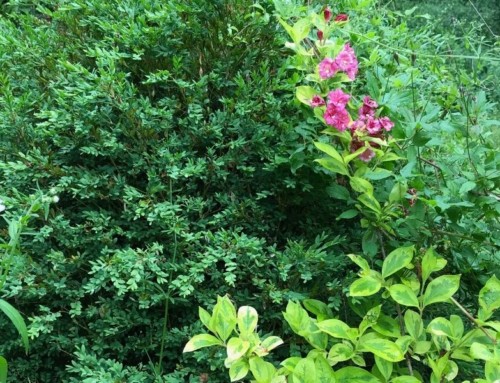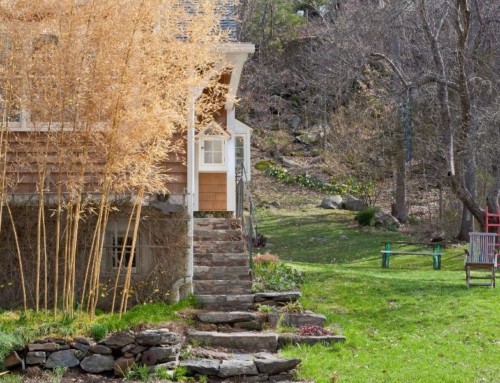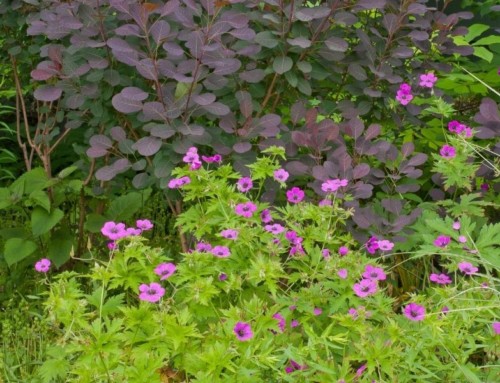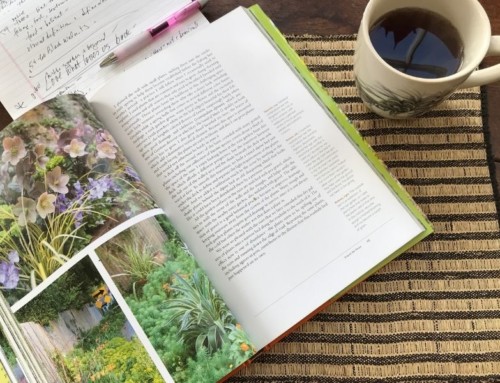Bees are the best pollinators.
Connecticut has 340 native bee species (plus 9 non-natives, including honey bees) at last count. Habitat loss and toxic chemicals are two factors in the decline of wild bee populations that we can do something about in our own yards.
After all, healthy bee habitat is good habitat for people too.
No clue what to plant to feed so many native bee species?
Here are some guidelines:
- Native bees evolved in relationship with plants, so incorporating more native plants into the home landscape is a good start.
- Because we have diverse bee species (long-tongue and short-tongue bees, big ones and small ones, specialists and generalists) with different needs and life cycles, we need diverse kinds of plants – with different sizes, shapes, bloom times, scents, markings, reproductive structures.
(What better excuse to go plant shopping and try something new? We can please ourselves and please bees at the same time).
- Aim to provide constant bloom from early spring to late fall. Look for plants that bloom prolifically for a long time – and plant a lot of them.
- Plan to always have at least three plant species blooming at the same time. Keep track of the gaps.
(My May flowers include dogwoods, a Carolina silverbell (Halesia carolina) grove, Fothergilla, wood poppies (Stylophorum diphyllum), wild geraniums and more. I can’t wait to plant my new bed to fill a June bloom gap).
- Plant to feed bee specialists first. (Some are nectar specialists, some specialize on pollen of particular plant families). The generalist species – those that feed on any number of plants – have a lot more options.
May-blooming native redbud trees (Cercis canadensis) support one specialist bee species, and leaf-cutter bees sometimes use redbud leaves for nesting material.
The photo (above) of redbud flowers shows its resemblance to other pea family plants. Humans value these nitrogen-fixing legumes for their high protein seeds (peas, peanuts, beans). Bees benefit from extra-high protein content in redbud pollen.
MAY BLOOMS FOR NATIVE NEW ENGLAND PLANT SPECIALIST BEES (AND OTHER POLLINATORS)
- Golden Alexanders (Zizia aurea)
- Mountain laurel (Kalmia latifolia)
- Azaleas and early rhododendrons (Rhododendron species)
- Blueberries, huckleberries and other Vaccinium species
- Spotted geranium (Geranium maculatum)
- Wild strawberries (Fragraria virginiana)
- Trout lily (Erythronium americanum)
- Violets (Viola species)
I love the combination of redbud tree, underplanted with ‘Rainbow’ azalea and a ground cover of wild spotted geranium (Geranium maculatum) for jazzy color.
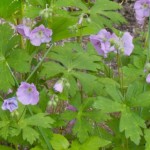
Geranium maculatum
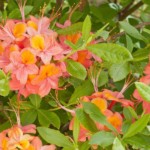
‘Rainbow’ azalea

